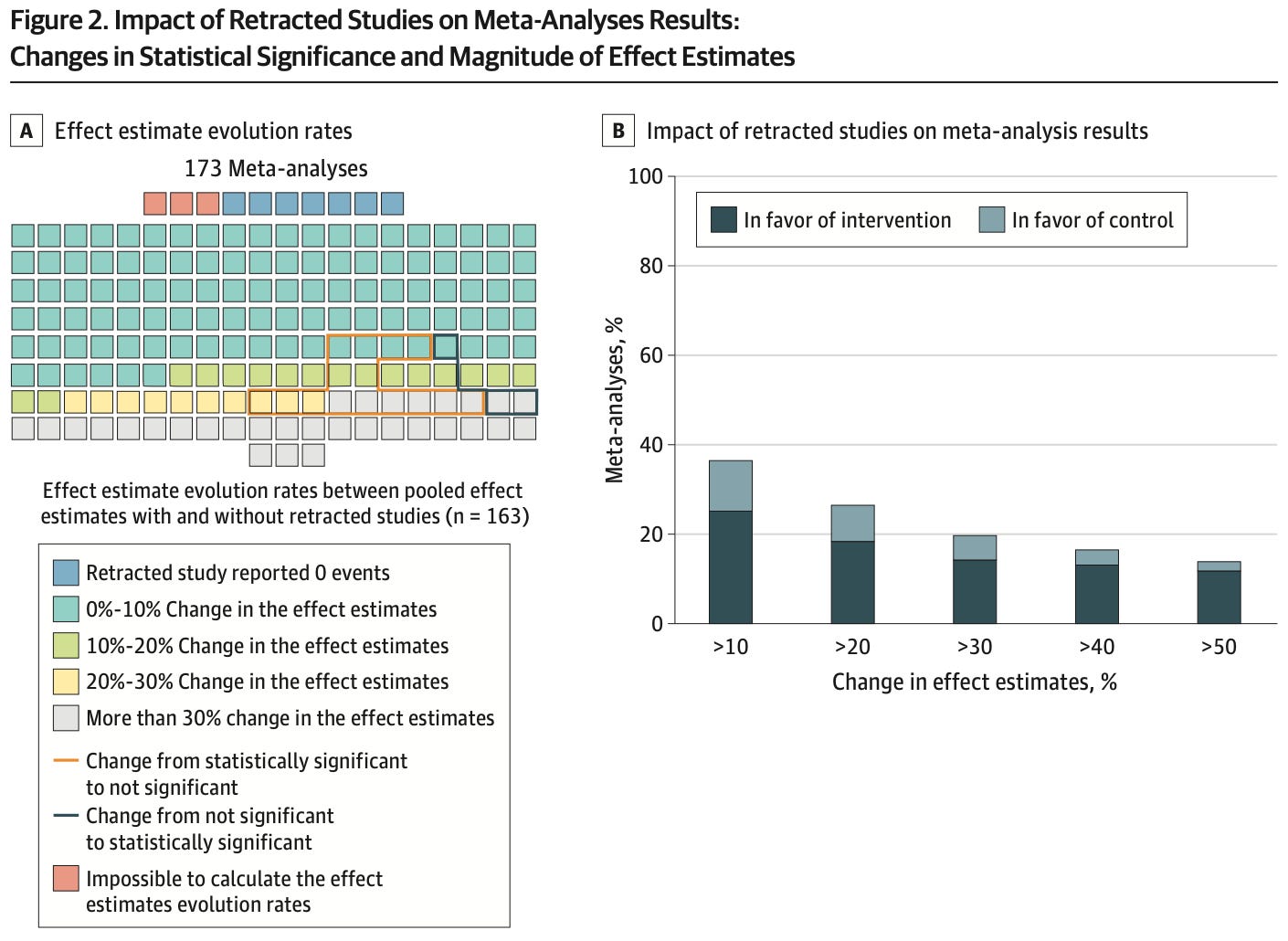Dead Data Walking
Where retracted studies live on forever.
Science gets it wrong, sometimes. Mistakes are made. Errors are found. Nefarious actors are identified.
Where published data cannot withstand scrutiny or minor corrections, studies are retracted and their content stricken from the record.
Or … is it?
These authors traced retracted studies to the 25 highest Impact Factor journals to determine whether they had already been swept up alongside valid published evidence for inclusion in systematic reviews and meta-analyses. A handful of these systematic reviews had been republished, retracted, or withdrawn themselves, but the vast majority (82%) lived on. Out of these, the authors were able to recalculate the outcomes from meta-analyses in 166, with the following effects:
As indicated in the figure above, a substantial minority of retracted studies were influential on the effect estimate from their associated analysis – including some exerting a greater than 30% effect on the pooled effect. The vast majority, as in figure 2B, favored the intervention. For obvious reasons, it’s quite concerning the body of “trusted” medical evidence perpetuates the misleading findings of discredited work.
Considering this study only canvassed 25 influential journals, these results are almost certainly just the tip of the iceberg. Unsurprisingly, considering the scope of the host publication, the Cochrane Database of Systematic Reviews held the most reviews containing retracted work – but they certainly do not hold a monopoly on the perpetuation of bad data.

